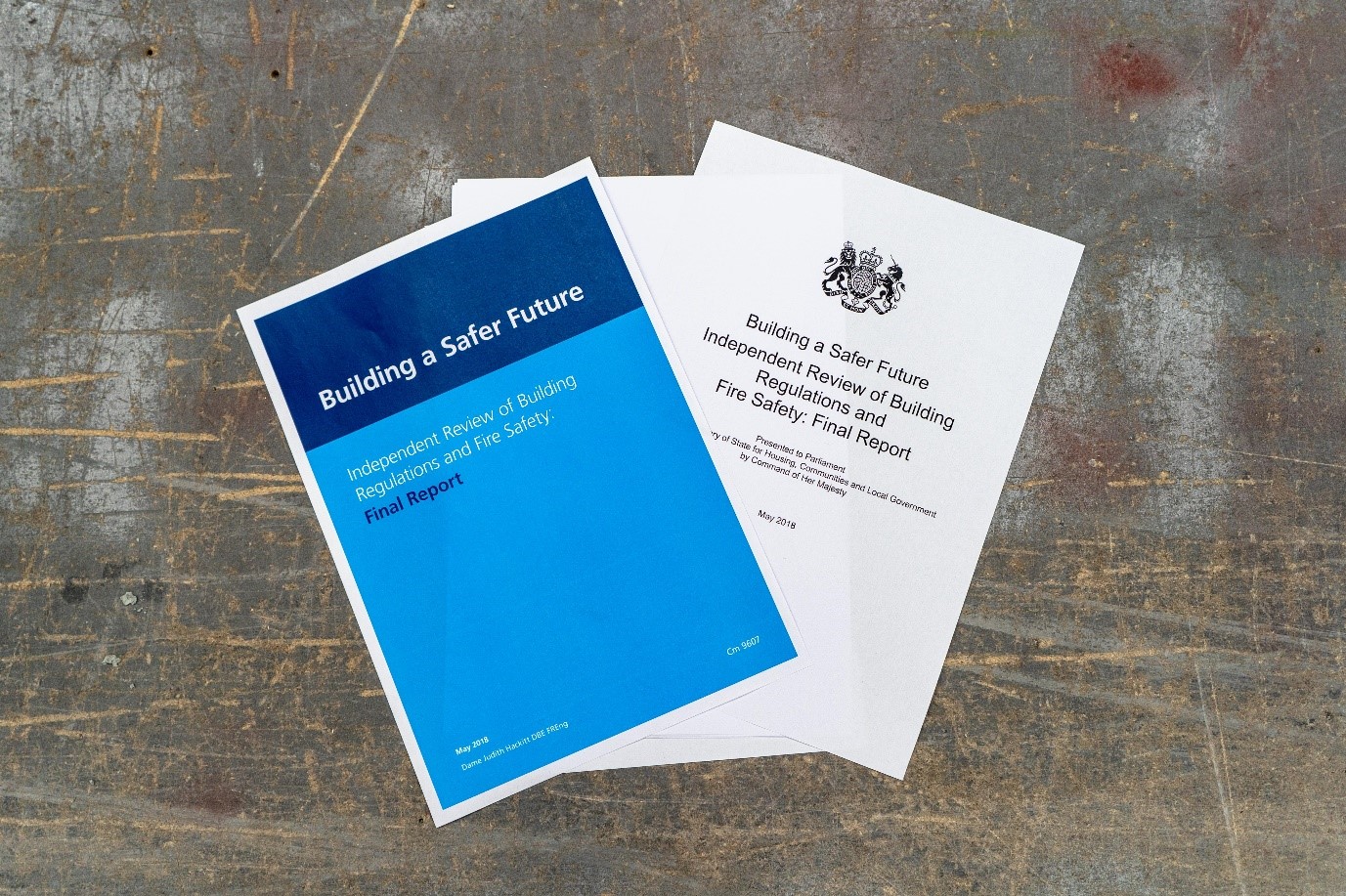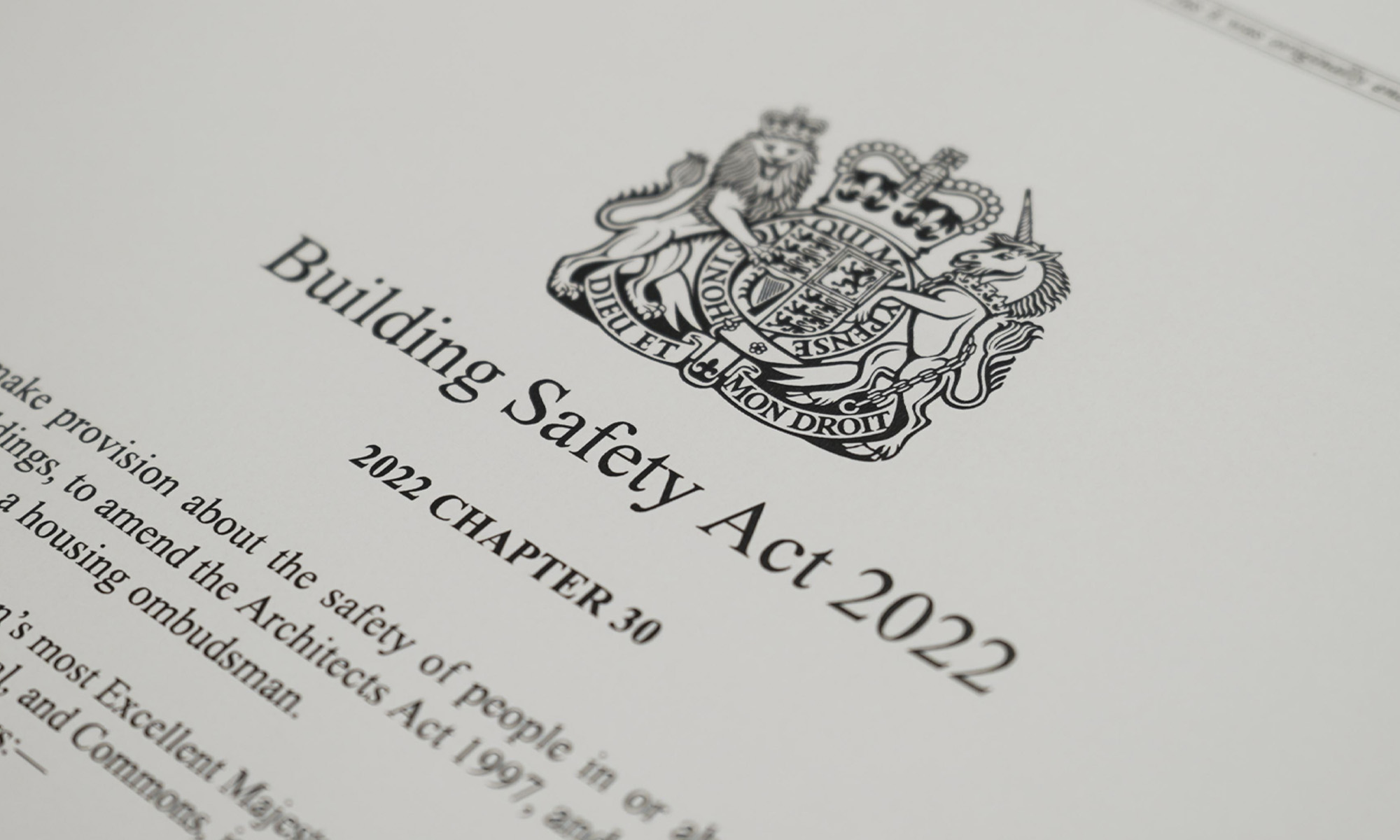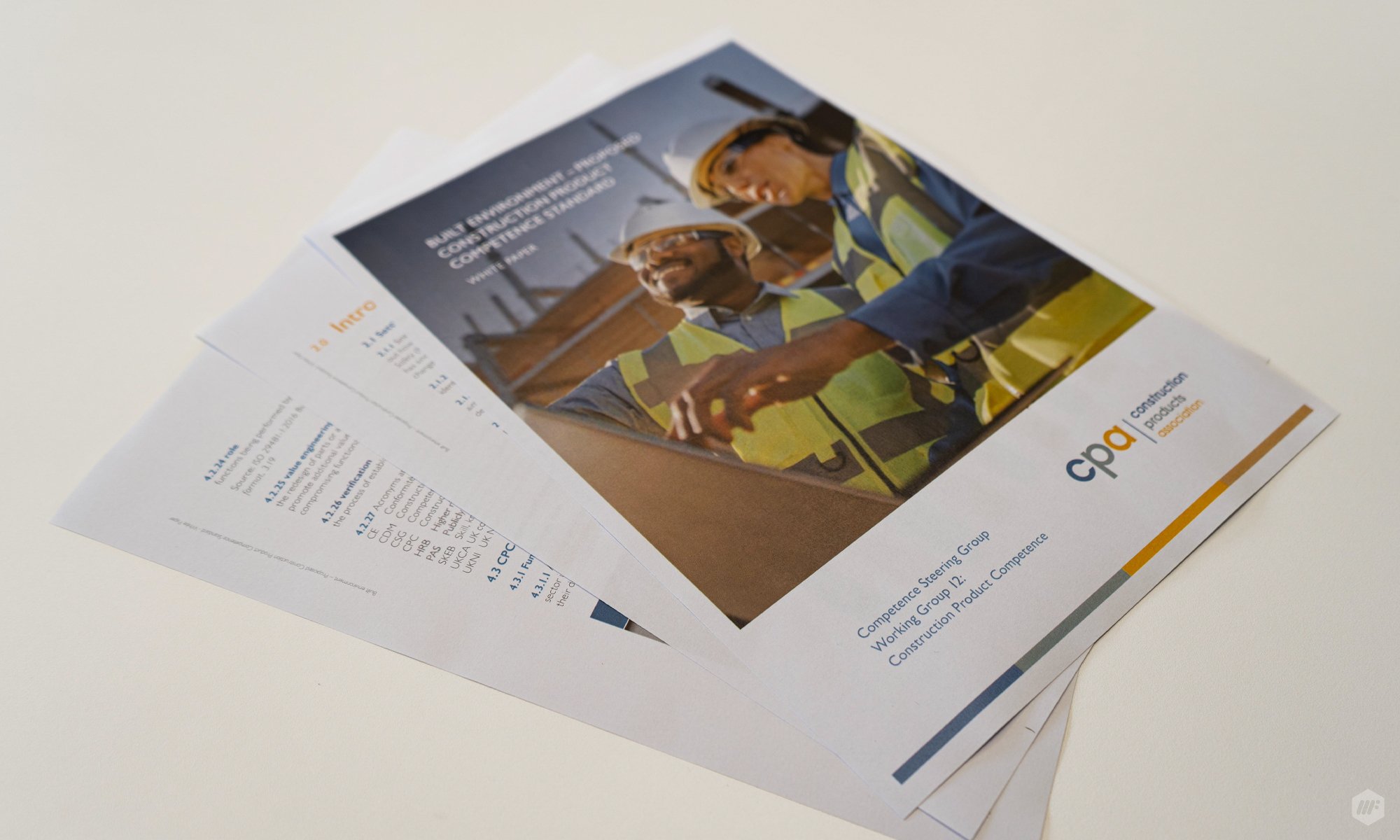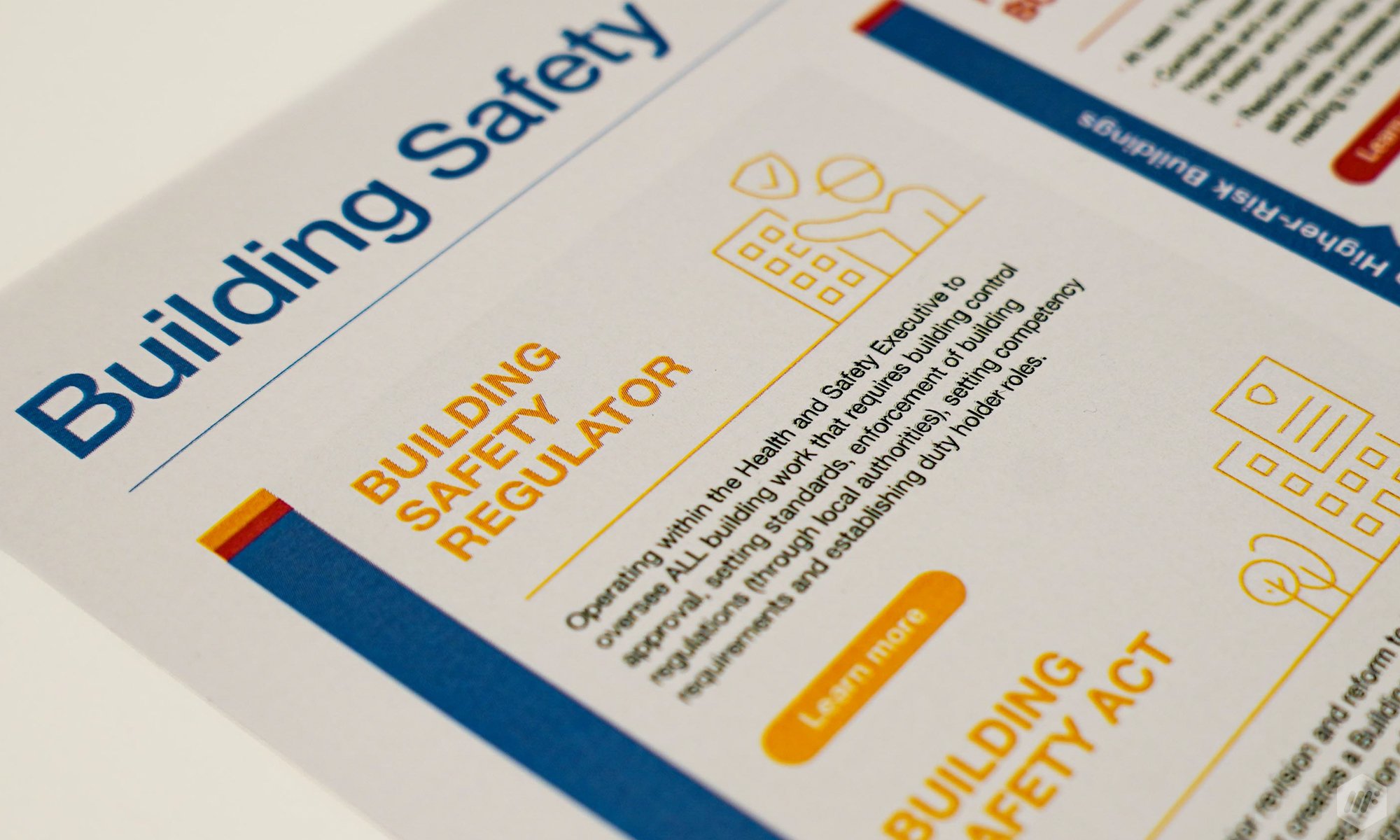The Building Safety Act was given Royal Assent just this past April, and it has already been dubbed ‘the biggest piece of legislation in construction in over 50 years’ by industry experts.
If that doesn’t tell you how important and ground-breaking it is, I don’t know what will!
It will potentially change how we do everything in construction. That means you and all M&E contractors will be directly affected.
Intrigued? You should be!
Keep reading to find out what this Act means for you and the future of our industry/sector.
- What is the Building Safety Act?
- Why did the Building Safety Act 2022 come about?
- What is the Building Safety Regulator?
- How will the Building Safety Act impact M&E support installations and contractors?
- Conclusion
What is the Building Safety Act?
According to the government, it is “an Act to make provision about the safety of people in or about buildings and the standard of buildings, to amend the Architects Act 1997, and to amend provision about complaints made to a housing ombudsman.”
It comes with some really transformative ideas ‘that give residents and homeowners more rights, powers, and protections’, and has two main objectives: to secure and maintain the safety of people in or around buildings, and to improve the standard of those buildings.
There were key points made by Dame Judith Hackitt in her 2018 report, bringing us to our next point…

Why did the Building Safety Act 2022 come about?
The Grenfell tower tragedy was a huge wake-up call for the construction industry – there was no denying that it had failed miserably, at the cost of many lives.
In response to that, Dame Judith Hackitt wrote The Independent Review of Building Regulations and Fire Safety, AKA the Hackitt report.
It is what paved the way for multiple documents, policies, and standards to come to fruition, including the Building Safety Act and others such as the Proposed Construction Product Competence Standard.
It forced the industry to take a long, hard look at itself and realise where its inadequacies lie and how we could improve. In short, "the current system of building regulations and fire safety is not fit for purpose and that a culture change is required to support the delivery of buildings that are safe, both now and in the future."

One of the many recommendations in the report is to improve governance to focus on an approach based on evidence and competence.
As of now, there is no standardised way of measuring competence in the industry, and this was highlighted as a major issue in the report because it means installations can be done incorrectly and therefore physical harm is a prominent risk.
A key quote that corroborates this is: “A clear, transparent, and easily recognisable method of demonstrating to the duty-holder that the necessary level of competence has been reached by those engaged to carry out work will also be important…… While there are many instances of competent people, there is no consistent way to assess or verify their competence. The current approach to levels of competence is disjointed and in places not rigorous enough.” (Hackitt, 2018)
Another key element of the report is the Golden thread of building information. It’s defined by the Building Regulations Advisory Committee as ‘the information that allows you to understand a building and the steps needed to keep both the building and people safe, now and in the future’. It also refers to how this information is managed and kept accurate, up to date, secure, clear, and accessible to those who need it (CIBSE, 2020).

Fig.1. CPA - Proposed construction product competence standard white paper aims to define what is meant by competence in relation to specific roles within the supply chain.
This Golden thread is something Hackitt communicated is missing in the industry’s current offering. It’s the evidence that we need to prove that the necessary steps have been taken to ensure a building’s safety. Without that, we wouldn’t be contributing towards a safer environment.
She also recommended a new regulatory framework focused on high-rise buildings, a new Joint Competent Authority (JCA) comprising Local Authority Building Standards, and a series of robust gateway points to strengthen regulatory oversight.
The Hackitt report was quite revolutionary and pioneered this movement for change, towards a better, safer, and more compliant future.
But of course, in order to solve the above issues, legislative action was required, hence, the Building Safety Bill was raised in 2021 addressing many of the issues mentioned in the Hackitt report and adopting its recommendations. That then became an Act in 2022 after receiving Royal Assent and will now become legislation.
What is the Building Safety Regulator?
As an almost direct answer to the issues Hackitt raised, the Act acts as a regulatory framework that encompasses a range of things that we can collectively do as an industry to allow for a safer built environment.
In order to keep track of this, the Act also creates 3 new governing bodies, as recommended by Hackit; one of which is the Building Safety Regulator (BSR). The Health & Safety Executive (HSE) will be appointed to the BSR, to oversee the safety of all buildings, monitor industry performance, and advise the government. (The HSE is the national UK regulator for occupational health & safety, working to protect everyone who might be affected by work activities).
The HSE’s pre-existing skills can help facilitate the BSR and get it up and running, and they’ll also be advised by two government committees: Industry Competence Committee and the Building Advisory Committee. Nevertheless, the BSR will be independent and have its own powers, plans, and mode of operation.
The BSR will help set direction and accelerate an industry-wide adoption of competence and compliance by enforcing the regulations and changes brought about in the Building Safety Act through local authorities.

How will the Building Safety Act impact M&E support installations and contractors?
For starters, the Act outlines the importance of appointing the right duty-holders with the right competence (the skills, knowledge, experience, and behaviours, or organisational capability). Sound familiar? (See quote in above subheading).
“Duty-holders” includes Principal Designers and Principal Contractors, and that will cascade down to M&E Contractors. Because, in order for Tier 1 contractors to prove that they are competent, they need all the relevant information and documents from the subcontractors to form the Golden thread, and must also show that their subcontractors are competent or it would impact the Tier 1’s reputation as well.
To be ‘competent’, one must be “suitably trained and qualified by the skills, knowledge and partial experience, and provided with the necessary instructions, to enable the required task(s) to be carried out correctly.”
Specifically the Building Safety Act states: A "competence requirement" is a requirement relating to -
(a) the skills, knowledge, experience and behaviours of an indiviual;
(b) the capability of a person other than an individual to perform its functions under building regulations. The BSA goes on to state that:
(3) "the regulations may require an appointed person who is not an individual to give an individual acting under its control who has the appropriate skills, knowledge, experience and behaviours the task of managing its functions as an appointed person".
That means even your installers need to be competent enough to carry out installations.
This ties into the next requirement of the Act, the answer to the Golden thread recommendation: duty-holders must manage building safety risks in the higher-risk building (at least 18m in height or 7 storeys) that they are responsible for and demonstrate that they’ve taken the necessary measures to do so. That demonstration will be the evidence, i.e. the comprehensive records about the building, i.e. the Golden thread of information.
That information may include how the buildings are constructed, how safety was designed into them, how they’re going to be maintained, etc., and of course, the proof that “duty-holders” are trained and competent (e.g. for installers, this could be a certificate from an installer training course). These are the first steps to ensuring that future buildings are going to be made as safe as possible; we should be doing everything in our power to ensure that.
By the time the project is completed, the duty-holder(s) should have a substantial body of information and documentation. This will be the ‘golden thread’ that is handed over to the Accountable Person. Accountable Persons are “landlords and freeholders who are in charge of the repairing of the building” and are “responsible for ensuring that fire and structural safety is being properly managed for the whole building”. This person must maintain comprehensive records about the building, and those that don’t may face criminal charges.
That’s right, if the duty-holder can’t clearly demonstrate their compliance and hand over the Golden thread, they won’t get off scot-free! They can face up to two years’ imprisonment, or a fine, or both. If the Tier 1 contractor has requested the information from the M&E contractor, then the latter will be penalised. Basically, whoever is responsible for non-compliance will be the one facing the charges. If that’s not enough motivation to be compliant, should any failure or error occur, Accountable Persons will also have to pay to rectify their mistakes.
Not only will it be a requirement for duty-holder to hand over the Golden thread to the Accountable Person upon completion of a construction project, but also, the up-to-date information will need to be presented at each stage (Gateway) of the project, otherwise, failure to do say may cause significant delays and costs. This will help achieve the BSR’s goals of compliance.
There are 3 Gateways:
1️⃣ Gateway one: the planning application stage
2️⃣ Gateway two: before the construction stage
3️⃣ Gateway three: when construction work is complete
In line with the Act and evidence-based approach, there is certain information that will have to be provided to the BSR as the Golden thread, to prove ongoing management of safety risks in order to progress to the next stage. They have the power to stop the construction of a building at any point of those Gateways.
Tier 1’s will need the Golden thread to apply for a Building Assessment Certificate from the Regulator – this certificate is what will say ‘this building can now be occupied’… so it’s pretty important! It will also be checked by the BSR to determine whether a completion certificate can be issued.
All of these factors are the reasons why Tier 1 contractors are now taking compliance much more seriously, and making it a requirement in order to award a subcontractor a project. This all means M&E contractors that dismiss ‘compliance’ and install their bracketry incorrectly will have to reconsider their approach. Time’s a-ticking!
Conclusion
The truth is that an Act like this is overdue for our sector. Too many practices in M&E are unsafe and all too common, and no one really is to blame – it’s just the way it’s always been. But it’s 2022 now, and we have many more resources to make for a much safer built environment – so no more excuses!
At the end of the day, you wouldn’t just be benefitting yourself/your business by being vigilant and compliant, becoming more attractive to Principal Contractors, getting awarded more projects, and gaining a name for yourself in the industry, but also, you’d be helping ensure the safety of all occupants and everyone involved. It’s a win-win-win situation.
You can read the Building Safety Act in full here:
References:
- CIBSE, 2021. Source: https://www.gov.uk/government/publications/building-safety-bill-factsheets/accountable-persons-factsheet
- GOV.UK, 2022. Source: https://www.gov.uk/government/publications/building-safety-bill-factsheets/accountable-persons-factsheet
- Stroma, 2022. Source: https://www.stroma.com/building-safety-act/briefings/building-information-golden-thread#:~:text=Once%20the%20project%20reaches%20completion,to%20maintain%20it%20throughout%20occupation


